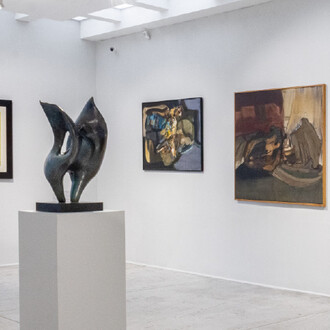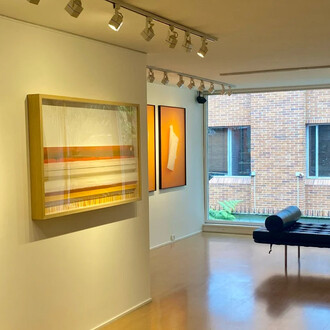While Martha Lucía Ramírez was living in Barcelona, she found Mary Carmen Garriga's abandoned school notebooks on Carrer de la Princesa 14, the street where they both lived. These contained assignments from the Lycée français between 1953 and 1963. The orphanhood of the notebooks refers to the abandonment of so many years of childhood and personal effort. It is important to remember that Franco's education emphasized repetition and memorization, in resonance with the values of national Catholicism, obedience and loyalty to the fatherland.
While empathy for human emotions has been the axis of Martha Lucía Ramírez's pictorial work, where the body and the drawing of the territory form a story about the human experience, this archival exercise, based on the notebooks, has served the artist to question herself about her own childhood, her formative years and her family relationships.
Twenty years passed before Martha Lucía Ramírez decided to work with the material in the notebooks. She began to write the book El archivo huérfano. Relato de albures y adopciones, where she recounts the relationship formed with Mary Carmen through reading, fictionalizing about the author, and revisiting her own childhood. Simultaneously to writing, the artist disassembles and reassembles the pages with red stitches that quote the school correction pencil, tearing and rejoining layers that change the meaning of the words, configuring new compositions and formats, linking ages, subjects and different spellings, like maps to guide in the conversation between collage and assembly. Thus, she deconfigures the canonical beauty of neatness and order, of straightness and precision, and proposes the disordered beauty of movement, of chance and nonsense.
With the adoption of the notebooks, Martha Lucía Ramírez shows us the intervention of an archive as a way of remaining, reinventing and getting to know oneself through the other.
















